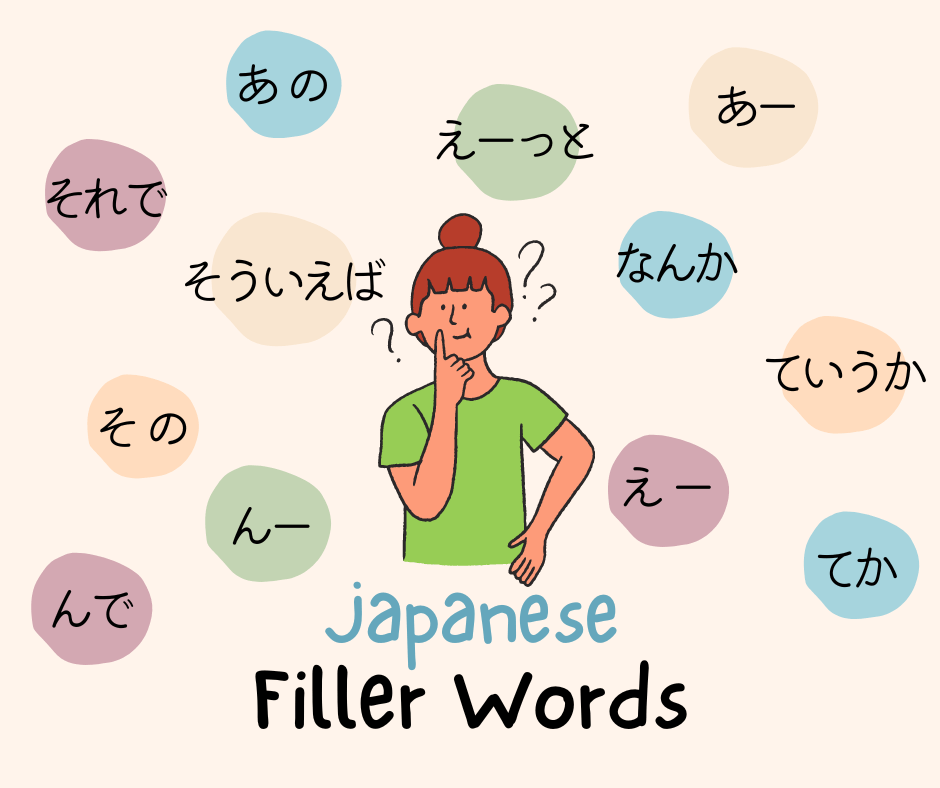How to Use Japanese Filler Words Naturally – Sound Fluent with
When diving into the Japanese language, you'll quickly notice native speakers often using small expressions like ええと (eeto) or あの (ano). These aren't random noises—they're Japanese filler words, essential tools for maintaining a smooth flow in conversations. Whether you're pausing to think or softening your tone, filler words help you sound more natural and native-like.
At TLS – The Japanese Language School, we teach learners not just grammar and vocabulary, but also these subtle nuances that truly bring fluency to life.
How to Use Japanese Filler Words Naturally
Let’s explore some of the most common Japanese filler words and how you can use them effortlessly in conversation.
1. ええと (eeto) / えっと (etto) / えー (ē)
English equivalents: “Uh,” “Er,” “Um”
These are perhaps the most frequently used hesitation sounds in Japanese.
ええと and えー work in both casual and formal settings.
えっと is more informal, typically used among friends.
Even as you learn advanced structures like Sonkeigo and Kenjougo, don't overlook basic speaking skills. Our article on common pronunciation mistakes highlights frequent errors learners make and how to correct them.
Examples:
ええと、何を言おうとしていたんだっけ…。
Eeto, nani o iou to shite itan dakke…
“Uhh, what was I trying to say…?”
えっと、今日は予定があるから…。
Etto, kyō wa yotei ga aru kara…
“Um, I already have plans today…”

2. あの (ano) / あのー (anō)
English equivalents: “Um,” “Well”
Used for hesitation or politely getting someone’s attention.
Examples:
あの、少しお話ししてもいいですか?
Ano, sukoshi ohanashi shite mo ii desu ka?
“Um, may I talk to you for a moment?”
あのー、これってどうやって使うんですか?
Anō, kore tte dō yatte tsukau n desu ka?
“Well, how do you use this?”
Learning the difference between ‘あげる’, ‘くれる’, and ‘もらう’ is just as important as mastering honorific verbs. Explore their usage in various contexts in our post on How to Give and Receive in Japanese.
3. その (sono) / そのー (sonō)
English equivalents: “Uhh,” “Well”
Often used while you search for the right words, or when gently leading into a delicate topic.
Examples:
私は、その、賛成できません。
Watashi wa, sono, sansei dekimasen.
“Well, I can’t really agree with that.”
そのー、ちょっと考え直したほうがいいかもしれません。
Sonō, chotto kangae naoshita hō ga ii kamo shiremasen.
“Uhh, maybe you should reconsider.”
4. うーん (ūn) / うーんと (ūnto)
English equivalent: “Hmm,” “Umm”
A sound that expresses thought or hesitation—very commonly used in daily conversations.
Examples:
うーん、それは難しい質問ですね。
Ūn, sore wa muzukashii shitsumon desu ne.
“Hmm, that’s a tough question.”
うーんと、次は何を話せばいいかな…。
Ūnto, tsugi wa nani o hanaseba ii kana…
“Umm, what should I say next…”
5. なんか (nanka)
English equivalents: “Like,” “Sort of”
Used casually to soften statements or express uncertainty. Common in spoken Japanese among young people.
Examples:
なんか、今日は変な天気だね。
Nanka, kyō wa hen na tenki da ne.
“Like, the weather’s kind of weird today.”
なんか、うまく説明できないんだけど…。
Nanka, umaku setsumei dekinain dakedo…
“I don’t know… I can’t really explain it well.”
Even advanced learners sometimes misuse subtle grammar points or Keigo. Don’t miss our article on Common Mistakes Advanced Japanese Learners Make to fine-tune your skills.
What Are Filler Words?
Filler words are expressions used in speech to fill pauses, often giving the speaker a moment to think or indicating that they’re not finished yet. In English, these include:
“Uh…”
“Um…”
“Well…”
“Like…”
“You know…”
Similarly, Japanese filler words serve both conversational and emotional purposes. They help speakers:
- Delay to think
- Approach delicate topics gently
- Add emotion or tone
- Show hesitation or uncertainty
- Keep the conversation rhythm natural
Mastering these can truly elevate your speaking ability, especially if your goal is real-world fluency.
Final Thoughts
Integrating Japanese filler words like ええと, あの, and なんか into your daily conversations is a small step that makes a big difference in how natural your Japanese sounds. And when you’re learning with a trusted institute like TLS – The Japanese Language School, you’re not just memorizing—you’re mastering the rhythm and nuance of real Japanese communication.
Explore our flexible courses, interact with experienced mentors, and take your Japanese from textbook to fluent.
FAQs
1. Are Japanese filler words necessary for speaking fluently?
Yes! They help make speech sound natural and give you time to think while talking.
2. What’s the difference between "ええと" and "えっと"?
Both mean "um," but "ええと" is slightly more formal, while "えっと" is more casual.
3. Can using too many filler words make my Japanese sound unnatural?
Yes, just like in English, overusing fillers can make speech sound hesitant. Use them in moderation.
4. How can I practice using Japanese filler words naturally?
Listen to native speakers, watch anime or dramas, and try incorporating them into your conversations.
5. Do Japanese filler words work the same way as English ones?
Mostly, yes! They help maintain the flow of conversation and indicate hesitation, just like "um" and "well" in English.
By incorporating Japanese filler words like "ええと" and "あの" into your speech, you’ll sound more fluent and confident in conversations. Practice using them naturally, and soon, they’ll become second nature!











